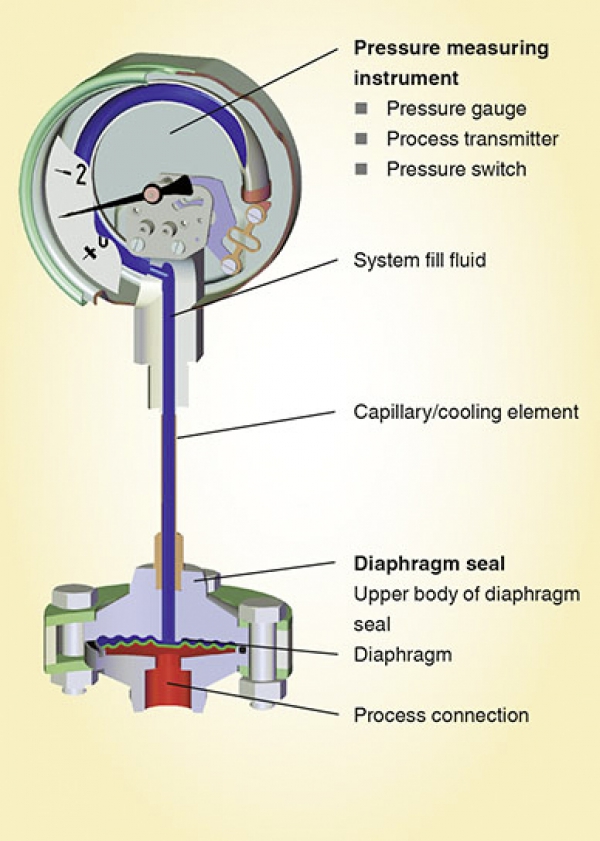WIKA: How do Diaphragm Seals Work?


Diaphragm seals, also known as chemical seals or remote seals, are used for pressure measurements when the process medium should not come into contact with the pressurised parts of the measuring instrument. A diaphragm seal has two primary tasks:
- Separation of the measuring instrument from the process medium
- Transfer of the pressure to the measuring instrument
The process side of the seal is isolated by a flexible diaphragm. The internal space between this diaphragm and the pressure measuring instrument is completely filled with a system fill fluid.
The pressure is transmitted from the measured medium by the elastic diaphragm into the fluid and from there to the measuring element, i.e. to the pressure measuring instrument or the transmitter.
In many cases, between the diaphragm seal and pressure measuring instrument, a capillary is connected in order (for example) to eliminate or to minimise temperature effects from the hot fluid to the measuring instrument.
Diaphragm seals are mounted to existing fittings or flanges. Usually the fittings consist of T-pieces which are integrated into a pipeline, or of welding sockets which are welded to a pipeline, the process reactor or a tank.
This diaphragm seal type offers the advantage that the “contact surface” between pressure medium and diaphragm is relatively large, thus ensuring accurate pressure measurement, especially for very low pressures (< 600 mbar).
The fact that they can be easily dismounted, e.g. for cleaning or calibration purposes, is a further advantage.
How do diaphragm seals work? - WIKA blog
Tel: 01737 644 008
Email: info@wika.co.uk
Website: www.wika.co.uk

| Telephone: | 01737 644008 |
| Email: | info@wika.co.uk |
| Website: | www.wika.co.uk |
| More information on the WIKA Instruments Limited BVAA Member Directory Page |
Search related valve / actuator articles: WIKA Instruments LimitedIssue 65Pressure Regulators







-web.jpg)





